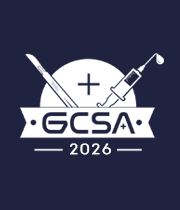Title : PICO (closed incision negative pressure wound therapy) dressing use as post op prophylaxis for preventing surgical site infections in spinal surgery; A retrospective single center study
Abstract:
Introduction: Surgical site infections (SSI) are among one of the dreaded complications of spinal surgery. These typically develop within the first 30 days following surgery. Negative pressure wound therapy (NPWT) has been employed for the management of open wounds and soft tissue injury. There has been a recent trend towards use of closed incision negative pressure wound therapy (ciNPT), such as PICO. There are only a few studies evaluating prophylactic use of ciNPT in Spinal Surgery. The aim of this study was to evaluate whether prophylactic use of PICO dressings can reduce SSI incidence and complications in Spinal Surgery.
Methods: Data was collected retrospectively for patients undergoing spinal surgery, with a PICO dressing used for closed surgical incisions, from February 2021 to October 2022. Each patient was followed up for 30 days. The results were compared with local hospital infection control statistics for previous years.
Results: A total of 50 patients underwent spinal surgery with PICO dressings. None developed a seroma or wound dehiscence. 2/50 (4.0%) patients developed SSIs (1 superficial, 1 deep). These were managed conservatively without a return to theatre. The average SSI incidence in the prior years was 1.15%, with 77.3% of cases requiring return to theatre. The use of PICO dressings did not significantly change the SSI incidence rate (p=0.087) or the rate of return to theatre for SSI (p=0.48).
Conclusion: Our study reflects that there is no difference in the incidence rates for surgical site infections for patients who have PICO dressings versus those having standard occlusive dressings as post-operative closed surgical incision site wound closure following spinal surgery. For those who do develop surgical site infections, there was no difference in the rates of return to theatres among the two patient populations.



